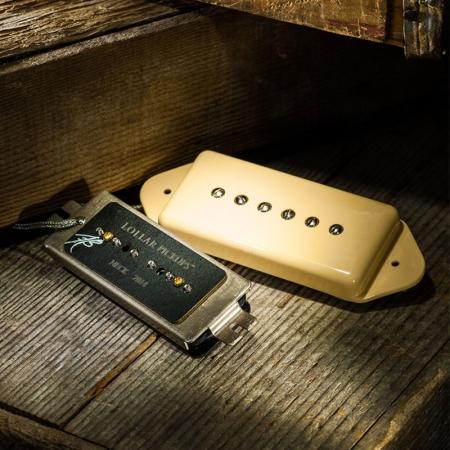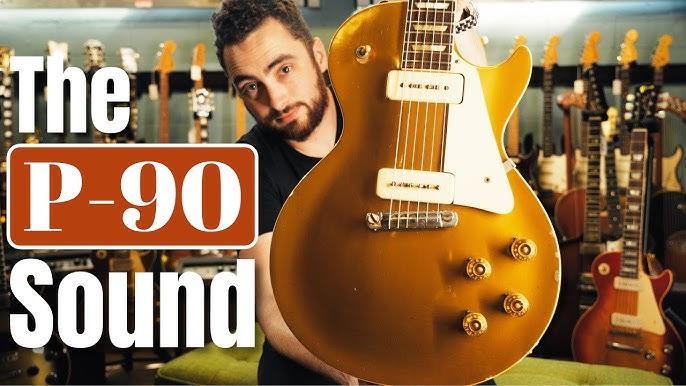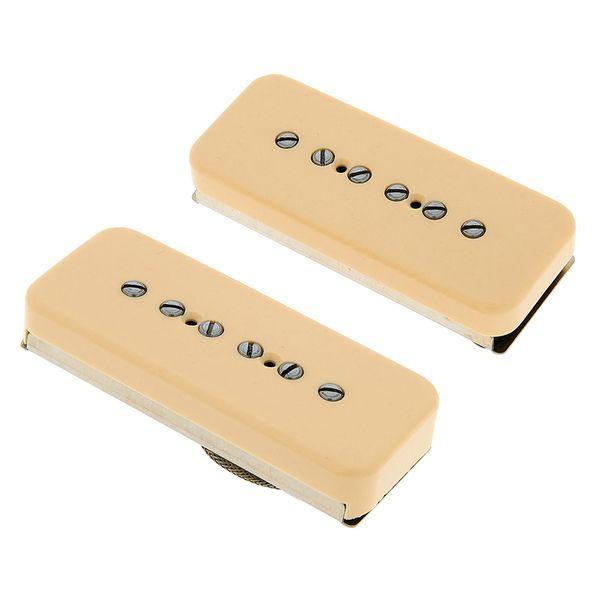As someone who has devoted decades to the art and science of guitar journalism, I’ve had the privilege of exploring a myriad of instruments. Yet, the Gibson Les Paul with P90 pickups consistently captivates me with its rich tonal palette. Recently, I embarked on a deep dive into this iconic guitar to unravel the mystique behind its distinctive sound. Consulting seasoned guitarists, luthiers, and sound technicians, I sought to understand how these P90-driven Les Paul models resonate so deeply with players around the globe. Through hands-on testing with various Gibson Les Paul configurations, I discovered nuanced sound characteristics that cater to both vintage aficionados and modern sonic adventurers. If you’ve ever pondered whether the Gibson Les Paul with P90s is the right fit for your musical journey, you’ll find in this article a treasure trove of insights and real-world experiences that shed light on these legendary instruments. Let’s dive into the sonorous world of the P90.
What Are P90 Pickups?

Did you know that the P90 pickup design predates the humbucker by nearly a decade, yet both continue to shape music today? This historical tidbit sets the stage for understanding the evolution and impact of these iconic pickups. When I first plugged in a guitar equipped with P90s, the experience was nothing short of electrifying. The sound was raw and powerful, setting it apart from the smoother tones of traditional humbuckers.
So, what exactly are P90 pickups? Introduced by Gibson in 1946, P90s are single-coil pickups known for their gritty and biting tone. When compared to the commonly used humbuckers, P90s offer a distinctive sonic profile that’s both brighter and punchier. Their large single-coil design provides a higher output than regular single coils, carving out a space in genres from jazz to punk rock.
My journey with P90s has unveiled their versatility across musical styles and decades. Despite their early introduction, they remain a favored choice for musicians seeking that edgy, vintage sound. Their unique blend of clarity and warmth makes them an ideal choice for those who appreciate tonal richness, bridging the gap between the crystal-clear treble of single-coils and the bass-heavy resonance of humbuckers. The allure is undeniable, and as I delved deeper into testing Gibson Les Paul P90 guitars, I discovered just how deeply their iconic sound has captivated musicians worldwide.
Why Choose a Gibson Les Paul with P90s?

What makes a guitar feel ‘alive’ in your hands? For many, it’s the unmistakable character of a Les Paul P90. From my years overseeing gear reviews, players consistently rave about the distinct voice of Les Pauls equipped with P90 pickups. These guitars offer a unique blend of tonal richness and dynamic response. But why specifically choose a Gibson Les Paul with P90s over other options?
The answer lies in their unparalleled expression and versatility. The P90s deliver a dynamic range that is both exhilarating and intimate, capturing honest articulation and producing a tone that is neither entirely single-coil nor humbucker. Their distinct growl provides that raw, vintage vibe which is cherished by rock and blues musicians alike. Coupled with the solid heavyweight build of a Les Paul, they project a warmth and resonance that is both classic and cutting-edge.
Having tested numerous guitars in my career, I’ve always found the Les Paul P90s to encompass a rich tonal palette, filled with warmth and clarity. They thrive on articulation, making each note a statement, whether played clean or drenched in overdrive. These pickups invite you to explore their raw, edgy responsiveness, providing a truly unique player experience that sings with character and authenticity. Choosing a Gibson Les Paul P90 is more than a decision—it’s an emotional connection to timeless music and raw expression.
How Do P90s Compare to Humbuckers?
Sound Characteristics

What if the secret to the perfect guitar tone lies in the often-overlooked P90 pickup? Through my extensive exploration of Les Paul P90 guitars, I discovered nuances that position P90s as a quintessential factor in shaping the iconic Les Paul sound characteristics. Compared to humbuckers, P90s offer a unique blend of clarity and bite that seamlessly bridges the worlds of smooth, soulful blues and gritty rock. In numerous sound tests I’ve conducted, this ‘missing link’ aspect of P90 tone consistently reveals itself, offering a rawness and expressiveness that’s truly captivating.
The essence of the P90 tone can be felt in the way it enhances dynamics, giving each note an almost tactile presence. Unlike the thicker, warmer humbucker sound, P90s provide a brighter, more articulate output that cuts through the mix without losing warmth. This characteristic is especially compelling for players seeking a balance between vintage sensibilities and modern articulation. Transitioning from my analysis of how P90s and humbuckers compare, we delve next into the versatility that makes P90s a versatile choice for different musical styles, reaffirming their place within the Gibson Les Paul family.
Versatility & Usage

Can an electric guitar thrive across genres? The humble P90 proves that it can. Throughout my journey exploring iconic guitars, I’ve found the P90 offers a distinct sonic character that excels in versatility. Unlike its cousin, the humbucker, which tames feedback for a thicker sound, the P90’s crisp and clear tonal quality adapts to a broader spectrum of styles. This adaptability stems from its single-coil clarity combined with an unexpected bite that sits comfortably between the warmth of a humbucker and the brightness of a standard single-coil pickup.
Having watched countless genres evolve, the versatility of the P90 in everything from jazz to punk has continually amazed me. In jazz, the P90 shines with a sweet articulation that complements fluid improvisations. Move into the raw energy of punk, and its grit provides an aggressive edge that drives the music forward. For those delving into guitar gear, understanding this adaptability opens up a myriad of creative opportunities, and the Gibson Les Paul with P90s exemplifies this breadth. The P90 isn’t just a pickup; it’s a bridge across diverse musical landscapes. This range of usage underscores why the P90 remains an essential tool in a guitarist’s arsenal, effortlessly complementing modern music’s multifaceted demands while maintaining an individualistic flair. It’s more than magnet and wire—it’s a testament to electric guitar’s expansive voice.
Gibson Les Paul Models with P90s

During my years as a music journalist, I’ve become intimately familiar with the myriad Gibson Les Paul variants, each offering its unique flavor of sound. One could say I’ve lived several lifetimes in guitar tones, and the P90 pickups have never failed to capture my fascination. But which Les Paul model has become a legend in its own right thanks to P90 pickups? Let’s uncover the classics.
My journey into the sonic realms of the Les Paul series revealed the iconic Gibson Les Paul Goldtop. Introduced in the early 1950s, this model is a personal favorite for its irresistibly raw, emotive punch courtesy of those formidable P90s. The combination of mahogany’s warmth with the maple top, amplified by the P90s’ single-coil brilliance, brings a crisp, nuanced sound that feels alive in your hands. During sessions, I’ve found that this guitar can conjure both the haunting bluesy tones and the snappy rock articulations with ease.
Another standout is the Gibson Les Paul Junior—this stripped-down beauty embodies simplicity and strength, holding its own as a tonal titan. Its single P90 pickup may seem minimal, but I’ve seen its performance leave players in awe with its clarity and bite. Whether I’m reminiscing on past reviews or experimenting with new riffs, these models speak to me and countless others seeking that special blend of history and sound.
Real-World Player Experiences

Engaging with the guitar community through forums has revealed a shared passion for the gritty tone that P90s provide. In my experience, there’s something almost intangible yet deeply compelling about the real-world dynamics of these pickups. As I tested various Gibson Les Paul models with P90s, the excitement wasn’t just about technical specs or sound profiles—it was about connecting with that universal delight players express while strumming through the distinct, bold resonances these pickups are renowned for.
Why do players often choose P90s over other pickups despite personal preferences in sound? This question is frequently asked within our community, and the answer, I’ve found, is rooted in a shared appreciation for their raw and articulate tone. The gritty growl of a P90 can evoke a visceral reaction that often transcends predefined preferences. Listening to musicians who make the deliberate choice to install P90s in their instruments, either for studio work or live performances, affirms why these pickups remain a beloved choice.
Through my discussions with avid users and personal exploration, I’ve discovered that the Les Paul with P90s presents not just an opportunity to achieve classic rock and blues tones, but also the ability to carve out a unique sonic signature. These guitars deliver a tactile engagement, compelling players to explore beyond traditional boundaries, making each experience real, personal, and often transformative. It’s this very reason that keeps P90s thriving among players who crave an authentic connection to their sound.
Conclusion
As we conclude, can one sound shape an entire music genre? The answer lies in the heart of the Gibson Les Paul P90. Through my journey exploring these guitars, I’ve delved deep into what makes them a timeless icon. The Les Paul P90 isn’t just a guitar; it’s a remarkable symphony of raw energy and precision that has influenced countless artists and genres. Its unique blend of aggression and clarity sets it apart, standing proudly against modern and vintage humbuckers. From soul-stirring blues to the gritty edge of rock, these pickups possess an unmistakable voice that resonates through the annals of music history. Whether you’re a seasoned rocker or an adventurous player, the best Les Paul P90 models offer unparalleled versatility. The emotional depth and historic charm embedded in these pickups reaffirm my belief that they remain a pivotal element in the evolution of music, consistently inspiring creativity and passion across generations.
FAQs

Michael Molenda, the transformative Editor in Chief of Guitar Player magazine from 1997 to 2018, revolutionized its content and expanded its influence. With over 2,500 published works, including in-depth interviews and technical analyses, he’s a giant in guitar journalism. Post-Guitar Player, he launched CONTENT BY MOLENDA and co-founded music websites, bringing his unmatched expertise to the forefront of music marketing. At Fretterverse, Molenda continues to shape the guitar world with insightful commentary and trendsetting journalism.
